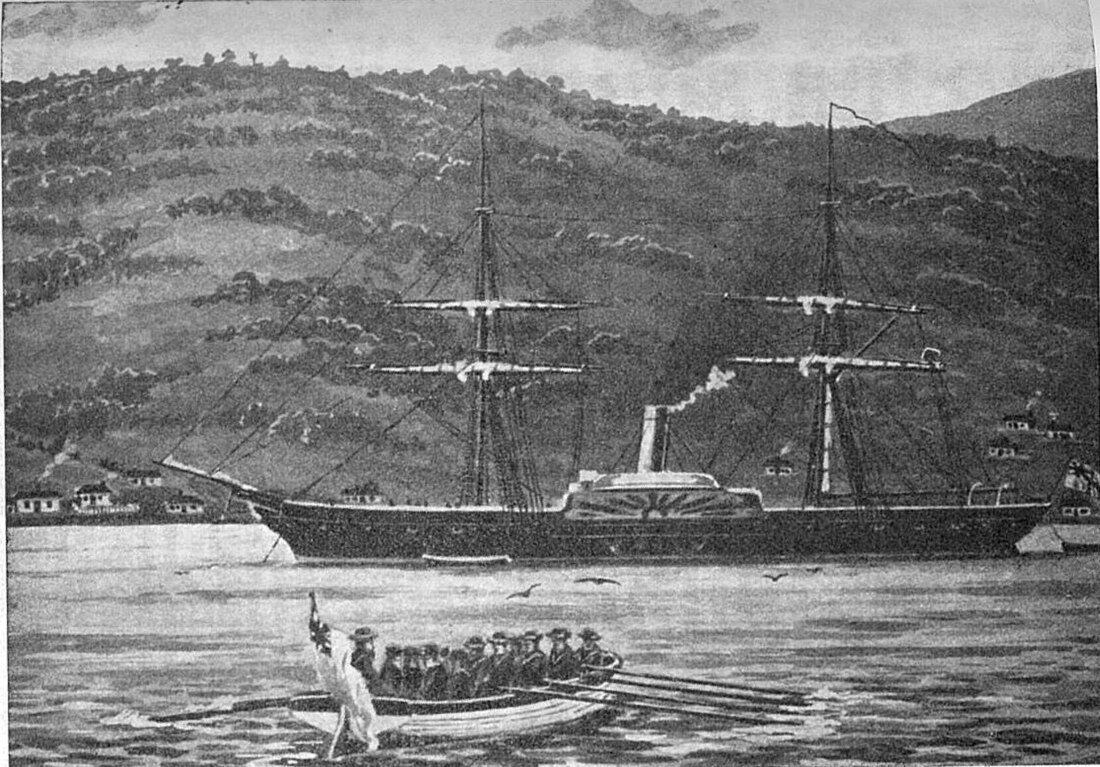Top Qs
Timeline
Chat
Perspective
Driver-class sloop
From Wikipedia, the free encyclopedia
Remove ads
The Driver class were a class of paddlewheel steam sloops of the British Royal Navy. Six Driver-class ships were ordered in 1840 and a further ten in March 1841, although only six were built. Five were ordered in 1847, but all were either built as paddle frigates or cancelled. Two wrecked in service, while the rest served until being retired and were either broken up or sold.
Remove ads
Design
Summarize
Perspective
The ships were designed by Sir William Symonds. They were built of wood, displaced 1,590 tons and had a length on the gundeck of 180 feet (54.9 m).[1]
Propulsion
Power was provided by a two-cylinder direct-acting steam engine driving paddle wheels. Spiteful had a side-lever steam engine, Devastation had a 4-cylinder 'Siamese' steam engine and Sphinx had a 2-cylinder oscillating steam engine. The engines developed between 280 and 300 nominal horsepower, apart from Devastation (400 nhp) and Sphinx (500 nhp). All the ships were capable of about 9 knots (17 km/h) under steam, with the more powerful Devastation and Sphinx making 10 or 12 knots.[1] A brig rig was fitted for operating under sail.
Armament
All three ships were armed with two 10 in (250 mm) (84 cwt) guns on pivot mounts, two 68-pounder (64 cwt) guns and two 42-pounder (22 cwt) carronades.[Note 2][1] In 1856 the armament was changed to a single 10-inch pivot gun, a 68-pounder (95 cwt) gun and four 32-pounder (42 cwt) guns. Later, the 68-pounder was replaced by a 110 pdr Armstrong gun breech-loading gun.[1]
Crew
They had a complement of approximately 149 men, increasing later to 160.[1]
Construction
Six Driver-class ships were ordered in 1840[2] and a further ten in March 1841, although only six were built. Five were ordered in 1847, but all were either built as paddle frigates or cancelled.[1]
Remove ads
Ships
Remove ads
Notes
- A total cost accounting for inflation of approximately £4,515,800 in today's money.
- "cwt", or "hundredweight" refers to the weight of the gun itself. "42-pounder" refers to the weight of the ball fired.
References
Wikiwand - on
Seamless Wikipedia browsing. On steroids.
Remove ads

